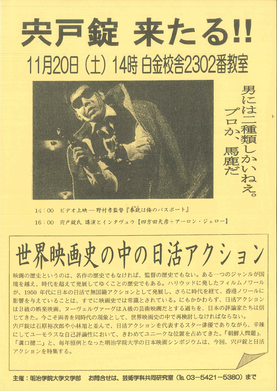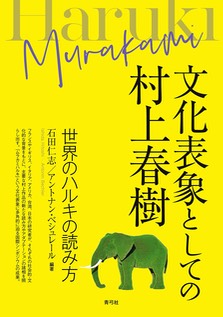News and Opinion
Abayo Joe! Shishido Jo: the Movie Star

The great actor Shishido Jo has died. When I was in grad school, he was virtually unknown abroad, but that was because the films of Suzuki Seijun and Nikkatsu Action were largely ignored in foreign festivals and markets since such supposedly crass popular cinema was not what the gatekeepers liked. When Seijun finally came to be celebrated abroad, Jo started garnering attention, but it is was not because he was an art cinema actor in the line of Nakadai Tatsuya, or a popular film star like Ishihara Yujiro (who is still not well-known among foreign fans of Japanese cinema). He was a unique character who transcended those cinematic categories. In that way, he somewhat resembled the nonconformist Seijun during his Nikkatsu days, but Jo’s character was his own and was visible in many non-Seijun films.
Jo was cool. He was cool even when he played the bad guy, which is why his villains were never just bad, but often shared much with the cool hero, especially a certain professionalism. In Plains Wanderer (The Rambler Rides Again, 1960), he does some pretty awful stuff, but you can’t hate him, even before the series narrative demands he team up with the hero at the end. That complexity made it possible for him to be both comedic and tragic, sometimes with a touch of insanity that Seijun brought out well in Branded to Kill (1967). It was rarely realistic, as it was an often self-conscious complexity, with Jo sometimes playfully (Hayauchi yaro, etc.) or sometimes contemplatively (A Colt Is My Passport) performing the possibilities of the character “Joe the Ace.” He was a serious actor, famously even going so far as to implant silicone into his cheeks to better play the part of a baseball catcher, but that seriousness could sometimes mysteriously blend with self-parody. Jo was one of a kind.
Speculating on Murakami Haruki and Cinema

It was an honor to be invited to participate in the "Colloque international 'Haruki Murakami au présent et au futur’” back in March 2018, which took place in Strasbourg and Paris. Not only was the conference quite stimulating for someone who is not a Murakami specialist, it was a wonderful opportunity to encounter some new colleagues in the study of modern Japanese literature. It was, in some ways for me, an encore to the quite productive experience of participating in the French symposium on Kawabata Yasunari in September 2014 (from which I ended up publishing articles in Japanese and English). It was also inspiring to see many of the participants engage with Murakami in a deep and often critical manner. This is not a gathering of Murakami fans.
It is thus a great pleasure to see that many (though not all) of the papers at the Murakami colloquium have now been published in Japanese as Bunka hyosho toshite no Murakami Haruki (文化表象としての村上春樹 / Murakami Haruki as Cultural Representation) and includes a contribution by yours truly.

